Take a look inside my brain and you behold an untidy sight. It’s chaos in there, due to continually picturing my life as if it’s going to be made into an episode for my TV show, Garden Wise Guys.
I co-host a regional public education show with Owen Dell, author of the recently published Sustainable Landscaping for Dummies book. Our show’s mission is to make the principles of sustainable landscaping and water conservation into an informative and entertaining half-hour. But lately, I’ve been lazy. Instead of 30-minute programs, I’ve been thinking about 60-second commercials.
Concept for Advertisement
Scene 1: Baby boomer couple, she in a mint green gardening hat with little pink Cecil Bruner roses on the band; he in his weekend Eddie Bauer sartorial splendor. They are meandering through a nursery looking at the vast selection of colorful, enticing perennials, discussing the merits of each. They are smiling and laughing, but as he continues to observe his wife, an ominous look of worry creeps over his face.
Scene 2: Long shot of the car. It is the scene from The Grapes of Wrath with all the family possessions tied, welded, and hot-glued to the roof. Except, in this version, trees jut through the sunroof, shrubs spill from the trunk, and assorted four-inch perennials are jammed into the cup holder.
[Fade to ten-minute disclaimer message: “May cause Dengue fever, cessation of all bodily functions, etc.”]
Scene 3: Our couple is in the office of their family doctor. Audio voice-over: “You’ve tried coping with this disorder on your own. You’ve attended support groups and struggled through past-life regression therapy. You might be suffering from of One-Of-Each-itis. Maybe it’s time to talk to your doctor about Chill Pill, the prescription medication that reduces your obsession to buy every plant you see.
“Yipes! That’s ME,” you’re thinking. Yes, like Stacy and Clinton, we’ve been following you around, secretly filming your nursery jaunts. Worry not; you aren’t alone. One-Of-Each-Itis afflicts most gardeners at one time or another. And there’s nothing especially wrong with having a lot of different plants in your garden. But once you unpack the car and carried your new babies into the yard, how do you decide where to put the lovely little beasts?
I try to avoid design-speak, but what you need is an ordering principle—a theme that makes it look like you thought the whole planting thing through.
Are You A Collector or an Arranger?
The Collector’s objective is simply owning and successfully growing all of the plants that they adore. Collectors don’t pay a lot of attention to the other plants that are growing nearby—the big picture takes a back seat to growing each individual plant. The criteria for where to plant the new purchase are straightforward: 1) Is there an empty space, and 2) Can I get it to grow?There are two camps of gardeners: Collectors and Arrangers.

The Arranger, on the other hand, is all about creating combinations that result in vignettes. The objective is a play of colors, forms and textures that will be subtly relaxing, exuberantly energizing, or whatever mood you’d like to create.
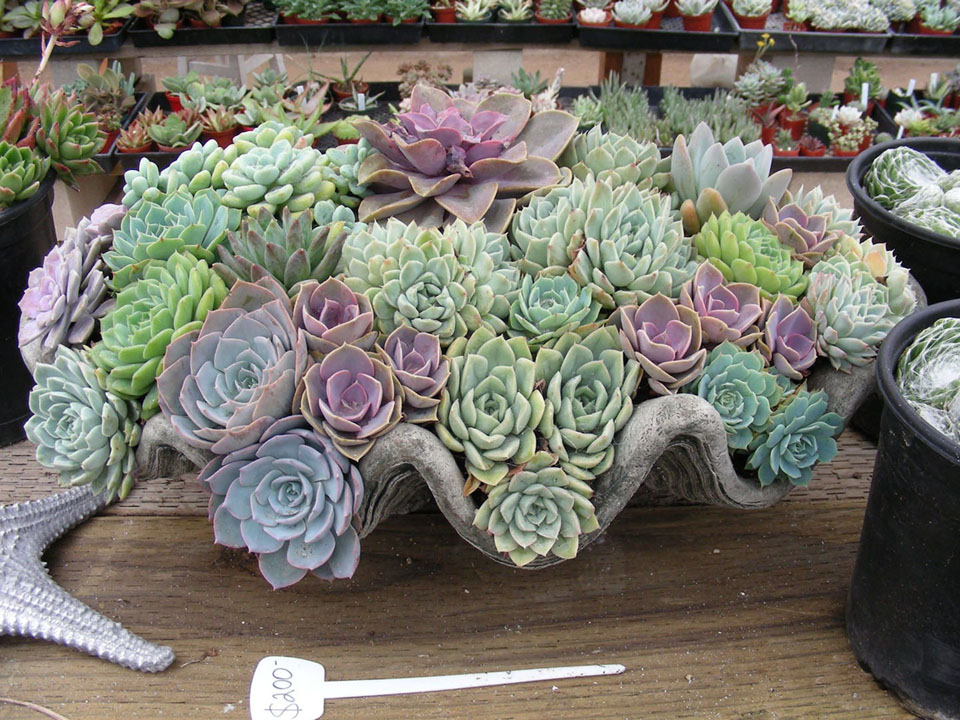
Let’s start. Assume that you just got home with a slew of new impulse purchases. Grab a clipboard, a sheet of blank paper and a marker, then head out to your garden.If you are a Collector but long to free your inner Arranger, the following approach gives you the best of both worlds. The principle is simple: find a common trait shared by a few of the plants and group those plants together to unify the composition.
Five Step Prescription
Step 1: Draw a shape that looks like a big planting bed in your garden. Don’t worry about scale. It might look something like this…
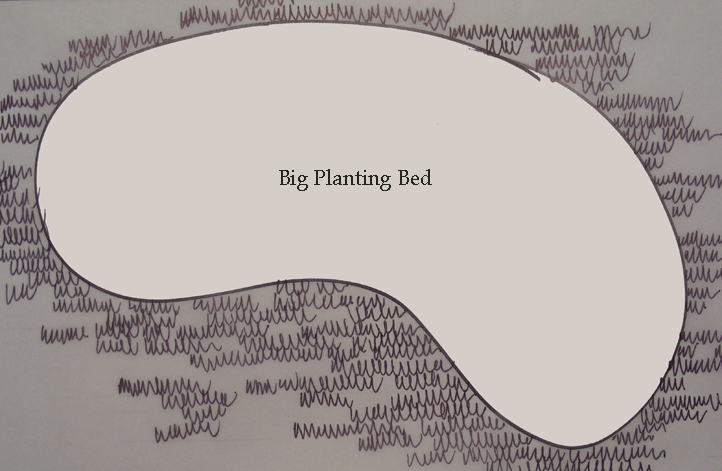
Step 2: Subdivide the bed you just drew into three flowing forms that we’ll call A, B and C (clever, eh?). My sketch looks like paisleys in heat.
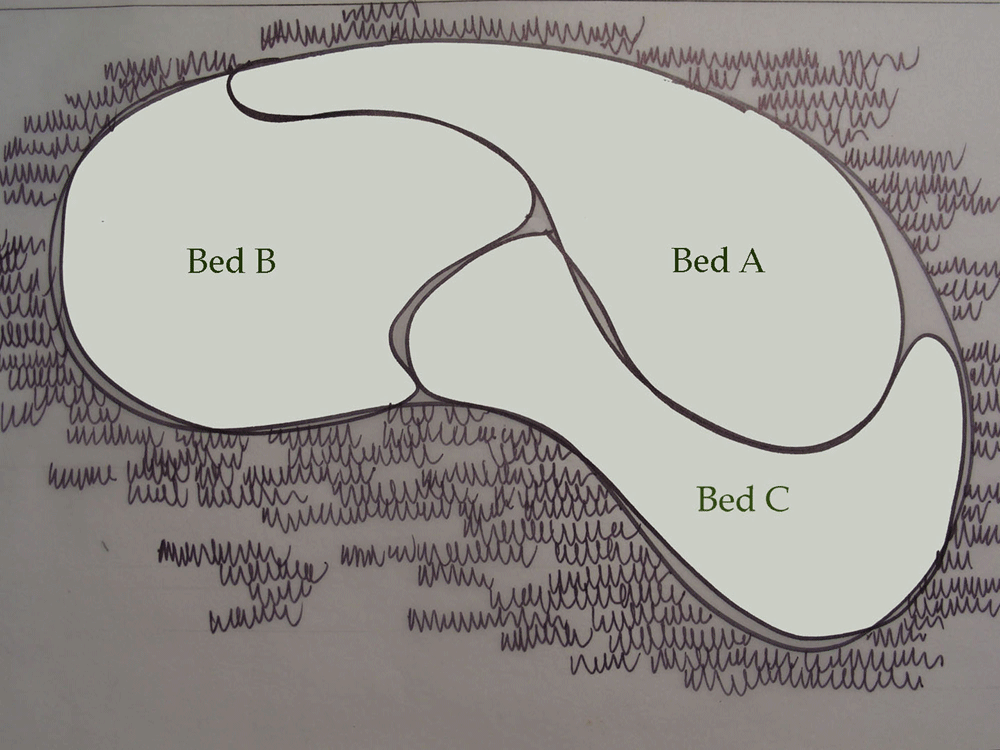 My sketch looks like paisleys in heat.
My sketch looks like paisleys in heat.
Step 3: Set the drawing aside for a moment, gather the new plants near the empty planting bed and have a seat. Look at each plant and jot down your observations about the following: leaf color, form (vertical, mounding, spreading, etc.), leaf size and shape, flower color, etc. For instance, French lavender is mounding, has small gray leaves and violet flowers—it could fit into a number of categories.
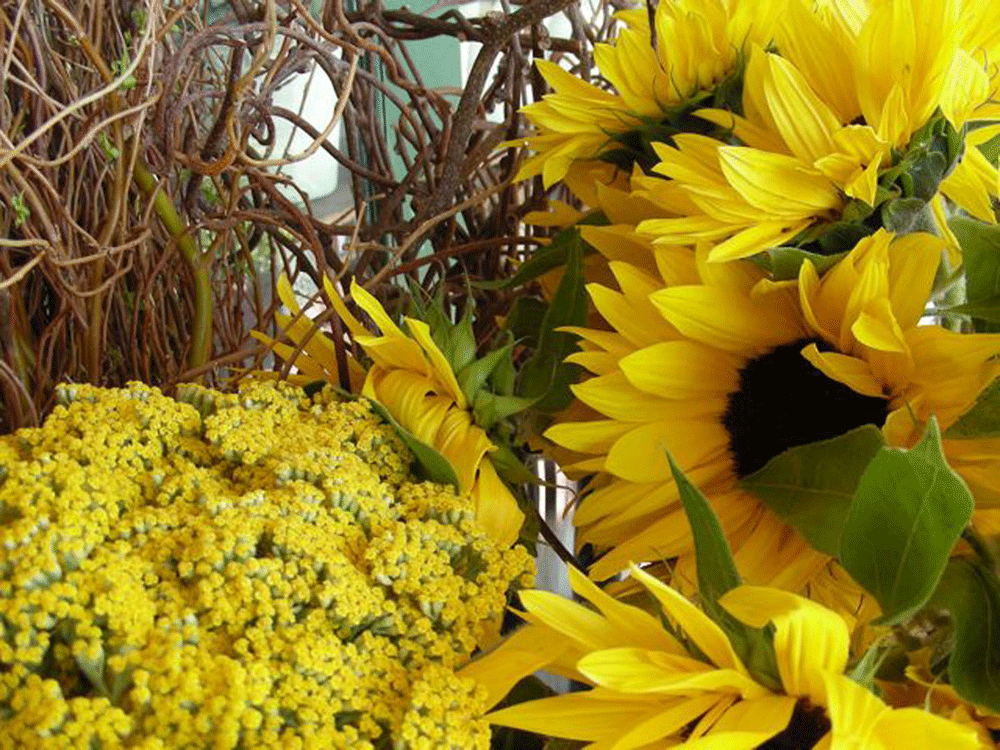
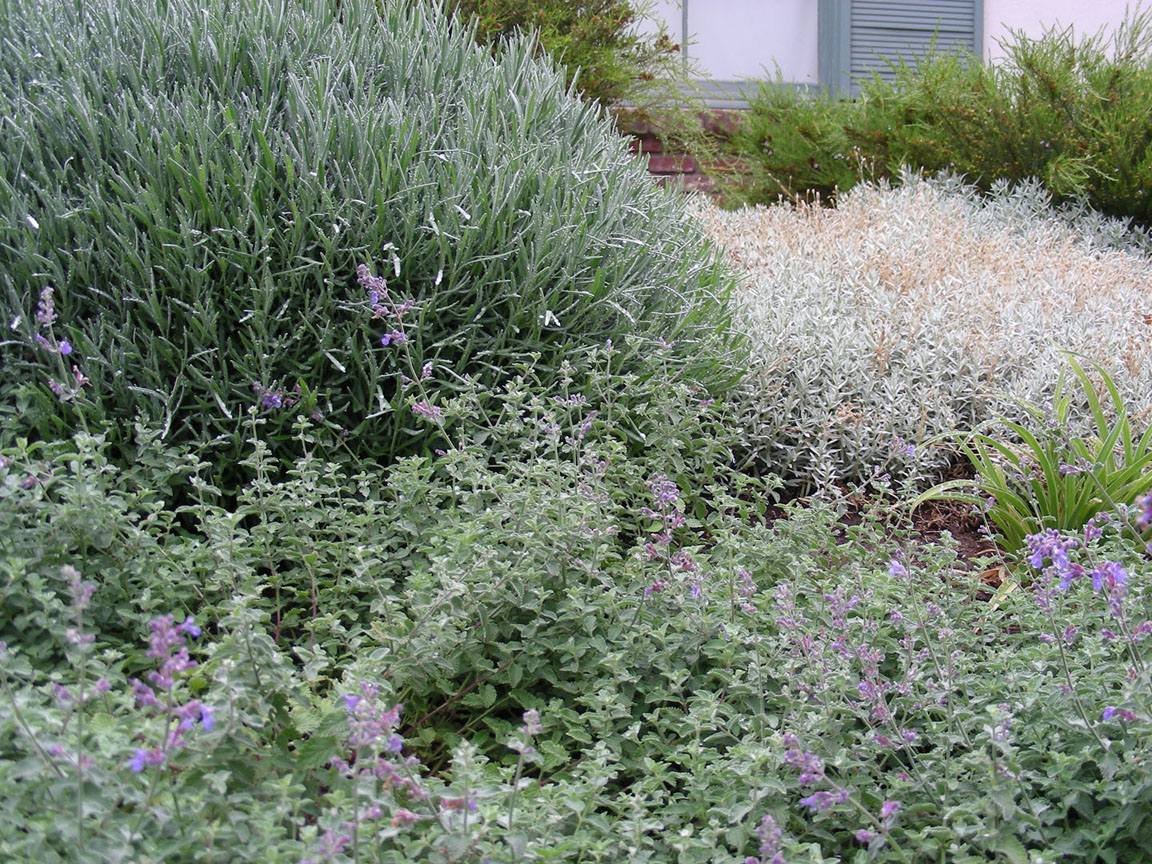

Step 4: It’s time to think like a designer. Decide what “ordering principle” you’d like to use to tame this unruly mob. Floral color? Variations on form?
For this exercise, we’ll base the groups on color. Group A will contain the warm colors (yellow, red, orange, etc.), Group B, the cool colors (blue, purple, green, etc.) and Group C will feature white, gray and silver. Sort the plants accordingly.
 Cool colors are in the left foreground, warm colors at the back and grays/whites to the right.
Cool colors are in the left foreground, warm colors at the back and grays/whites to the right.
We’re almost there.
Step 5: Begin laying out the plants within the broad outlines you sketched. I’m putting the cool colors in the left foreground, the white/gray plants to the right and the warm colors in the back. Within each of those groups you can micro-tune to create contrasts and interest. I have three different plants in each of the three subgroups. Perhaps in Group A, the tall golden coreopsis will be in the back, sizzling red poppies will fill the mid-ground, and the orange nemesia will fill out the front.
Repeat for Groups B and C using your own sense of style to create pleasing combinations of plants.
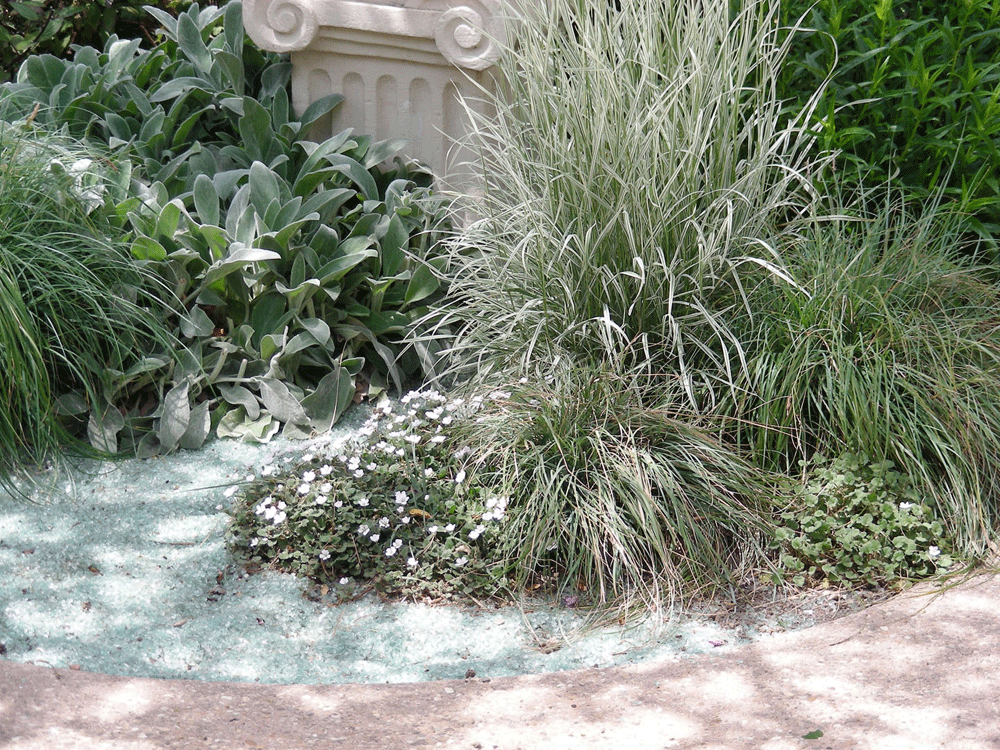
Before you start digging holes, take a few steps back and behold! What you’ll see is three “big ideas” that simplify the entire bed and bring order to the composition. The good news is that within each major grouping are very unique plants, each with its own distinct character.
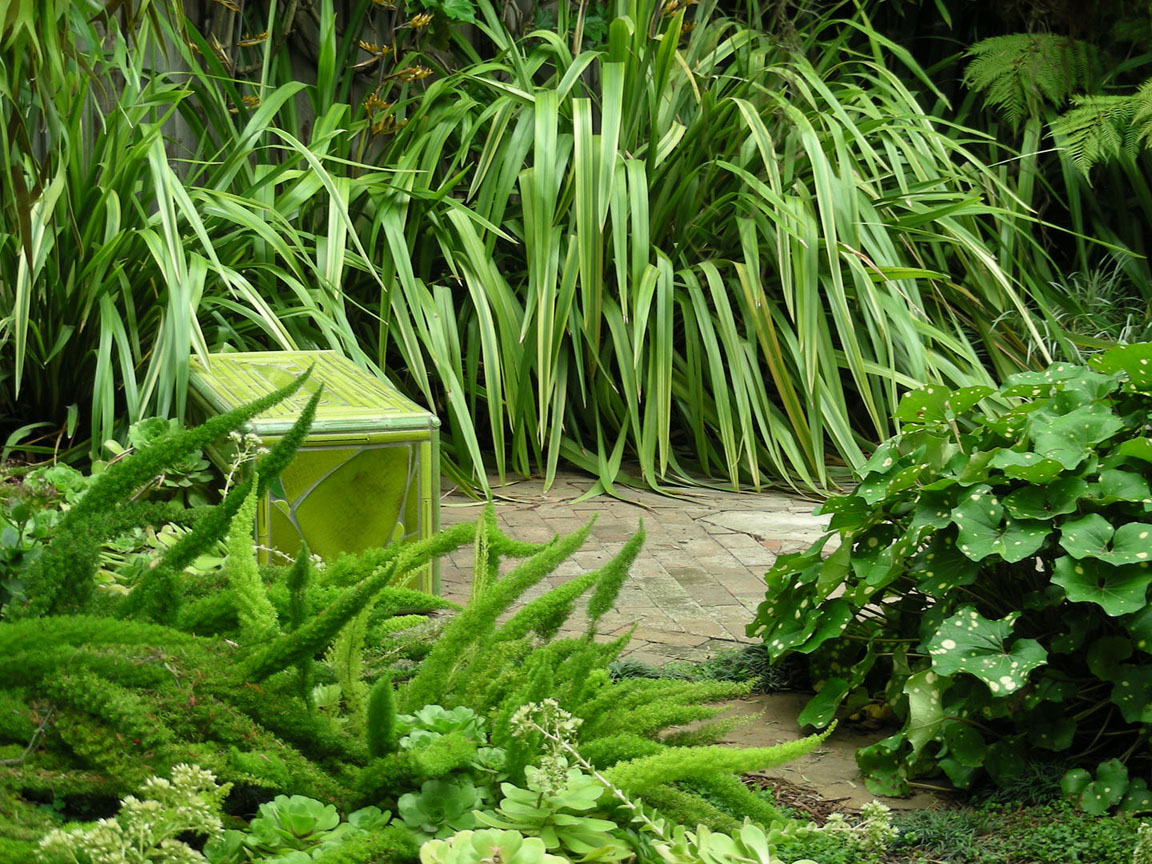
I’m hoping our couple from the nursery has a chance to read this blog. I hear that even the generic version of Chill Pill can set you back the price of a dozen lovely perennials.

















Comments
Oh my gosh, that's me. I have a problem. I buy what I like! I lack in design. This will be a nice starting point to at least get the yard a little more organized :)
Terrific, Billy! It's amazing how a adding a little structure can help everything fall into place. Thanks for sharing your wisdom & experience maybe I'll make a little Rx pad with your blog address to hand out at local nurseries...cheaper than a Chill Pill!
I don't like to say I'm suffering from One-of-Each-itis. I'm just experimenting with a lot of different plants and, let's face it, they're going to arrange themselves in a few years time. But I do love the simplicity of your "paisleys in heat" design strategy.
I like the "no-designer-speak" approach Billy. Very user friendly and easy to understand. I'm a little of both types of gardener.
Shirley
Unfortunately I've got the N1a1T mutation: I tend to adopt orphans one at a time, then try to make 'em work within the existing garden. But your system works just as well when I look at ordering principles I've (unwittingly) got in place already. Thanks for making it easier to live with my condition!
Yes, I do suffer from it. Funny scenario Billy. I have a pic of me this spring with the back of my sister's van spilling over with our purchases, much like your ad.
My One-Of-Each-Itis comes from budget restraints mixed with intense plant lust. You see it, you HAVE to have it. It's $4.99 a pot, (or more) so you get...just one.
While I've certainly had the "itis" for most of my gardening career, I am changing my ways over the last few years and now keep the phrase: "Paint with a Big Brush" in my mind when I go to the nursery. I try to make myself buy fewer varieties and at least 3 of each plant. (little budgets!) or 5 if I feel I can really splash out.
Then I try to have patience, and also try to develop my propagation abilities, so I can get those wider brushes faster. ;^)
I must be in recovery. I buy TWO of everything now....
Does buying plants from Craig's LIst and garage sales count as one-of-each-itis or cheap-itis?
Does buying plants from Craig's LIst and garage sales count as one-of-each-itis or cheap-itis?
As a collector with criteria about gardens as habitats, ecology and environment, I believe one should, could go beyond
pure, inane aesthetics.
Turf, hedges and palm trees do nothing for the environment, only create organic waste,requiring excessive hours to maintain. The first need, irrigation, gas, oil,electricity, noise to keep up, unless using a push mower or goats.
The only relevant matter with aesthetics besides garden composition is the way to go regarding, informal/formal; prairie/cottage and so on.
One thing that I find really dull is the mania with planting in even numbers. I go for ZEN asymmetrical groupings.
Now, if one can not propagate, does not know, practice that
fundamental skill, then you depend on nurseries and designers.
And that is that.
I loved this. I'm a SBHS alum transplanted to the Midwest, but we still winter on the Central Coast. I recently taught a class sponsored by our local Master Gardeners on using color in the garden. We talked about creating "drifts of color" (a la Gertrude Jekyll and others) using different plants in the same color group for those of us with itis. I wish I had thought of your paisley shapes too! Thanks for the good idea.
I'll be looking at my planting beds a bit differently now - as will my neighbors when I am done, thank you! I love your delivery of information, laced with such wit... makes learning fun!
I usually buy 3 of everything - but place them in different areas of my garden. (I live on 2 city lots.) After one season, at least one of the plants is usually performing well. If the other two plants have managed to survive, the next Spring, I move them to the same location as the one flourishing.
Even if you research your plants well before purchasing, placing the same plant in different spots really gives you a heads up on where they will thrive.
Billy Goodnick here: Looks like a whole bunch of you suffer from this dread condition. I don't want to steal Jerry Lewis' thunder, but perhaps a telethon is in order? I'm sure we can raise a few mil to develop a cure.
But you're assuming you are only at risk of catching this illness from a nursery or plant sale. What if your friends are all serial propagators? Plant lovers can never let down their guard!
I guess I'm also a bit of both? But I relate to verdancedesign - I think I have orphanitis - the extra plants left over from my landscapes find their way onto my balcony or flat gardens...
Love your silver design - one of my absolute favorite combinations is silver and white.
Great ideas in this blog - thanks!
Shawna
I most definitely suffer from this plant disease but it's with good intention. Being in Texas, sometimes, some plants healthier than others. So when one goes out, I have another as a backup. Also, I end up most of the time giving plenty away. Someone always wants a piece of this or that from my garden. They can't help themselves.
It's a tropical paradise.
BG, I'd have to say, I'm both the collector and arranger, being a landscaper and all. I most definitely create combinations into vignettes. 'Cause that's what makes a garden the most intriguing, colors, forms and textures. I think it just gives us avid gardeners more of reason to spend time in our gardens. Is that so bad?
My front garden is a perfect demonstration of extreme itis. Very colorfull and full of accidental compositions. It has been said, "gardening is editing." But what to do when you can't stand to throw out any plant? Any suggestions?
If you do suffer from One-Of-itis, you can still blend them into your existing landscape or container groupings by utilizing a favorite color or texture element already established elsewhere in the garden.
I buy cool new plants that I see in my sales travels. Gotta try 'em! Back home, I look for a spot where they'll be shown off to their best (while finding the correct growing conditions, of course). Sometimes that means removing a plant that's rather lack-luster in order to make room. Then I'll divide a grass or perennial clump to surround it with 'friends' to show it off. I love that part. Not all plantings have to be newly purchased. Many times dividing and moving plants will get them a better location, design-wise and more habit-friendly.
Billy, how about a perennial-dividing tutorial? It's so easy, and will show folks that plants are a lot tougher than we often think. Not enough new gardeners are convinced they can do it sucessfully.
Zen, structure, color mix, boy are you folks lucky. Most of us with limited yard space and limited budgets can't live within the limited space allowable for our gardens. The kids, the dog, the outdoor cooking area, the spill over area from the daily activity of the garage. How about some helpful hints for
a very large population of wannabe better gardeners who have
thin borders, whose hostas are mowed over by their husband's mowers and planting distances for perrenials where the gardener
has limited space. We need to encourage garden planning and design but lets start with how much is too much, in what zone, how much is too little, answering questions like why does my
6" forced gift plant rose I planted for easter not come up again the next year, they are perrenial aren't they? The questions should not be how many you are buying, but why are you buying what your buying, do you know anything about what you are buying and do you have a plan for it?
Log in or create an account to post a comment.
Sign up Log in